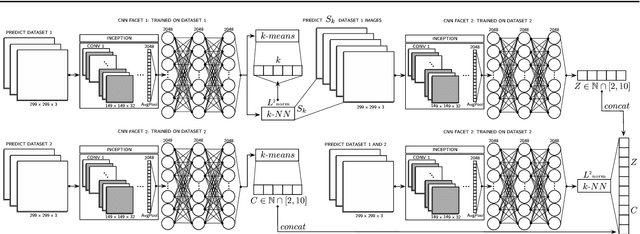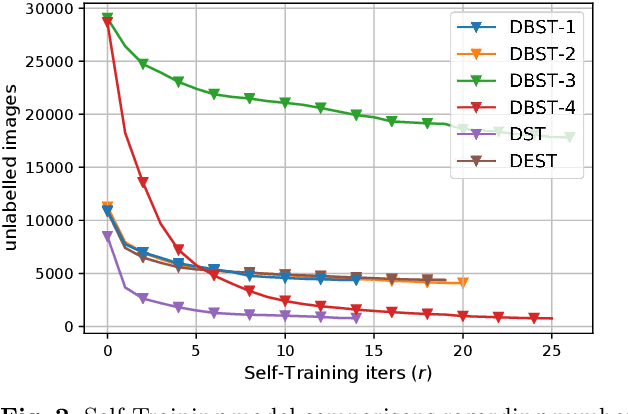Mark Swainson
Multi-Source Deep Domain Adaptation for Quality Control in Retail Food Packaging
Jan 28, 2020



Abstract:Retail food packaging contains information which informs choice and can be vital to consumer health, including product name, ingredients list, nutritional information, allergens, preparation guidelines, pack weight, storage and shelf life information (use-by / best before dates). The presence and accuracy of such information is critical to ensure a detailed understanding of the product and to reduce the potential for health risks. Consequently, erroneous or illegible labeling has the potential to be highly detrimental to consumers and many other stakeholders in the supply chain. In this paper, a multi-source deep learning-based domain adaptation system is proposed and tested to identify and verify the presence and legibility of use-by date information from food packaging photos taken as part of the validation process as the products pass along the food production line. This was achieved by improving the generalization of the techniques via making use of multi-source datasets in order to extract domain-invariant representations for all domains and aligning distribution of all pairs of source and target domains in a common feature space, along with the class boundaries. The proposed system performed very well in the conducted experiments, for automating the verification process and reducing labeling errors that could otherwise threaten public health and contravene legal requirements for food packaging information and accuracy. Comprehensive experiments on our food packaging datasets demonstrate that the proposed multi-source deep domain adaptation method significantly improves the classification accuracy and therefore has great potential for application and beneficial impact in food manufacturing control systems.
Deep Bayesian Uncertainty Estimation for Adaptation and Self-Annotation of Food Packaging Images
Nov 26, 2018



Abstract:Food packaging labels provide important information for public health, such as allergens and use-by dates. Off-the-shelf Optical Character Verification (OCV) systems are good solutions for automating food label quality assessments, but are known to under perform on complex data. This paper proposes a Deep Learning based system that can identify inadequate images for OCV, due to their poor label quality, by employing state-of-the-art Convolutional Neural Network (CNN) architectures, and practical Bayesian inference techniques for automatic self-annotation. We propose a practical domain adaptation procedure based on k-means clustering of CNN latent variables, followed by a k-Nearest Neighbour classification for handling high label variability between different dataset distributions. Moreover, Supervised Learning has proven useful in such systems but manual annotation of large amounts of data is usually required. This is practically intractable in most real world problems due to time/labour constraints. In an attempt to address this issue, we introduce a self-annotating prediction model based on Self-Training of a Bayesian CNN, that leverages modern variational inference methods of deep models. In this context, we propose a new inverse uncertainty weighting technique that encourages the Self-Training model to learn from more informative data over time, potentially preventing it from becoming lazy by only selecting easy examples to learn from. An experimental study is presented illustrating the superior performance of the proposed approach over standard Self-Training, and highlighting the importance of predictive uncertainty estimates in safety-critical domains.
Agricultural Robotics: The Future of Robotic Agriculture
Aug 02, 2018Abstract:Agri-Food is the largest manufacturing sector in the UK. It supports a food chain that generates over {\pounds}108bn p.a., with 3.9m employees in a truly international industry and exports {\pounds}20bn of UK manufactured goods. However, the global food chain is under pressure from population growth, climate change, political pressures affecting migration, population drift from rural to urban regions and the demographics of an aging global population. These challenges are recognised in the UK Industrial Strategy white paper and backed by significant investment via a Wave 2 Industrial Challenge Fund Investment ("Transforming Food Production: from Farm to Fork"). Robotics and Autonomous Systems (RAS) and associated digital technologies are now seen as enablers of this critical food chain transformation. To meet these challenges, this white paper reviews the state of the art in the application of RAS in Agri-Food production and explores research and innovation needs to ensure these technologies reach their full potential and deliver the necessary impacts in the Agri-Food sector.
 Add to Chrome
Add to Chrome Add to Firefox
Add to Firefox Add to Edge
Add to Edge